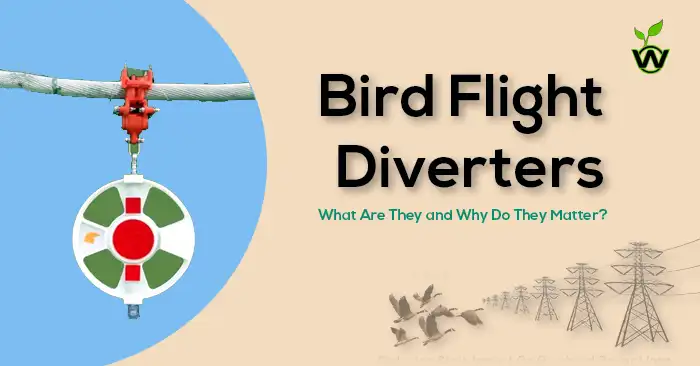Meta, the parent company of Instagram, Facebook, and WhatsApp, is introducing significant changes to how teenagers use its platforms. These updates, or we can say Instagram Teen Accounts aim to enhance safety and privacy for young users amidst growing concerns about their online well-being.
In this article, we will talk about Instagram Teen Accounts, what it offers, and what its limitations. Go through the complete article to know every bit and piece of this new move.
Instagram Teen Accounts

Instagram Teen Accounts are automatically set up for new users under 18. It helps manage how teens use the app and allows parents to control their teen’s experience. The goal is to help parents feel confident that their teens are using Instagram safely.
You May Also Like: 5 Best Water Chillers for Cold Plunge on Amazon.com
Starting September 17, 2024, Instagram will begin implementing new privacy features for accounts of users aged 16 and under. These updates include:
- Private by Default: Accounts for users under 18 are private by default, so only approved followers can see their posts. Parents can set time limits and manage what teens can view.
- Restricted Contact and Messaging: Teens can only receive messages from people they follow or are connected with. They can also only be tagged or mentioned by those they follow, limiting unwanted interactions.
- Content Filtering: Teen accounts automatically hide sensitive content, such as sexual or violent posts, even if shared by someone they follow. The app also avoids suggesting sensitive content.
- Muted Offensive Language: Instagram filters out offensive words related to bullying in comments and messages, providing a safer environment.
- Reduced Notifications: Notifications are paused for teens between 10 p.m. and 7 a.m. to promote better sleep habits.
- Explore Feature: Teens can personalize their experience by selecting topics they’re interested in, allowing them to see more relevant posts.
Adam Mosseri, head of Instagram, underlined that these changes are designed to address parents’ concerns about their children’s online safety. “We chose to focus on parents’ opinions because they understand what’s best for their children better than any tech company does,” Mosseri said.
Also Check:Best New Inventions 2024 : Making Life Easier
Background, Concerns, and Legislative Actions
The move comes in response to mounting criticism and scrutiny over social media’s impact on young people’s mental health. Reports have linked social media use to issues such as anxiety, depression, and cyberbullying. A 2021 Wall Street Journal series revealed that Instagram’s leadership was aware of the platform’s potential harm to teen girls’ body image but did not act to mitigate these risks.
Additionally, the Kids Online Safety Act (KOSA) is moving through Congress, aiming to impose stricter safety and privacy requirements for children and teenagers online. If passed, KOSA would require platforms to offer features that limit targeted algorithms and prevent unauthorized access to minors’ data.
While Meta’s new policies align with some aspects of KOSA, they do not fully address all concerns. For instance, Instagram’s changes do not specifically target the problem of underage users lying about their age when registering.
How to Get an Instagram Teen Account?

Instagram will automatically set up Teen Accounts for all new users under 18. Existing accounts for teens won’t be switched right away but will be updated to Teen Accounts over the next 60 days in the US, UK, Canada, and Australia. The update will begin in other places in January.
Must Check:Top 12 Walking Pads: Best Choices for a Healthier Lifestyle
How to Set Up Teen Supervision on Instagram
To set up supervision on Instagram, both the teen and their parent need to agree. Here’s how it works:
- Sending an Invite: Either the teen or the parent can send a supervision invite.
- For Teens: Go to the menu, click on Settings, then Supervision. Follow the prompts to create an invite and share the link with your parent.
- For Parents: Go to the menu, click on Settings, then Supervision. Create an invite and share the link with your teen.
- Accepting the Invite: The invite must be accepted for supervision to start. If the teen sends the invite, they need to confirm that the parent who accepted is the right person to supervise their account.
- Eligibility: Teens must be between 13 and 17 years old, and the parent must be over 18. Both must have or create an Instagram account.
- Update the App: Make sure both the teen and parent have the latest version of the Instagram app for this to work. If something isn’t working right, updating the app might help.
- Invite Expiry: Invites expire 48 hours after being created. If it expires, you’ll need to create a new invite.
Only one parent can supervise a teen’s account.
What’s Next for Instagram
The effectiveness of Instagram’s new features remains uncertain. Critics argue that while these measures are a step in the right direction, they might not fully resolve the complex issues related to social media use among teens. Andrew Przybylski, a professor at Oxford University, suggests that many proposed solutions lack scientific rigor and may be more about addressing public concerns than actual health outcomes.
Also Check: Top 10 20k Power Banks for Ultimate Charging Power
Dr. Megan Moreno from the University of Wisconsin School of Medicine views the new settings as a significant improvement in privacy and safety for young users. However, she notes that reactions from teenagers themselves will be crucial in assessing the real impact of these changes.
What More Instagram Could Do to Improve the Safety and Privacy of Teens?

Instagram is the 3rd biggest Social media platform along with WhatsApp. To make It safer and protect young users better, the platform could:
1. Better Age Checks
Improve ways to verify users’ ages, using methods like ID checks or face recognition to make sure people are who they say they are.
2. Stronger Content Filtering
Use better technology and more human reviewers to catch and remove harmful content like bullying or self-harm posts before they reach users.
3. More Parental Controls
Give parents more tools to monitor and manage their child’s Instagram use:
- Activity Reports: Share details about what their child sees and interacts with on Instagram.
- Custom Filters: Allow parents to block certain types of content or keywords.
4. Education and Support
Offer resources to help both kids and parents:
- In-App Guides: Provide interactive lessons on how to use social media safely.
- Help Resources: Include links to mental health support and resources within the app.
5. Better Anti-Bullying Tools
Improve tools to deal with bullying:
- Immediate Alerts: Notify users and their guardians about bullying incidents as they happen.
- Anonymous Reporting: Let users report bullying anonymously.
6. Clearer Algorithm Info
Make it clear how Instagram decides what content to show:
- Explain Algorithms: Provide simple explanations about how content is recommended.
- Content Control: Give users more control over what they see on their feed.
7. Limit Features for Minors
Restrict certain features for younger users:
- No Messages to Strangers: Block messages from people who aren’t already friends.
- Screen Time Limits: Help users manage their time on the app with customizable limits and reminders.
8. Regular Updates and Feedback
Keep improving by listening to users:
- User Surveys: Ask users and parents for feedback on how well safety features are working.
- Update Policies: Regularly update safety measures based on new trends and user input.
9. Better Privacy Controls
Enhance privacy options to protect personal data:
- Detailed Privacy Settings: Let users control exactly what information is shared.
- Data Requests: Allow users to check and understand the data Instagram collects about them.
By taking these steps, Instagram could create a safer and more supportive environment for young users.
Also Read:Friend AI Necklace: Your New Friend to Combat Loneliness
Conclusion
Instagram’s updated protocols are a proactive step towards enhancing online safety for teens. However, the broader conversation about social media’s effects on young people’s mental health is far from over. As these changes roll out, both parents and teenagers will need to stay informed and engaged to ensure a safe online environment.
Note: 1. Quotes have been modified slightly to prevent plagiarism. 2. Credit for Images goes to Meta.






